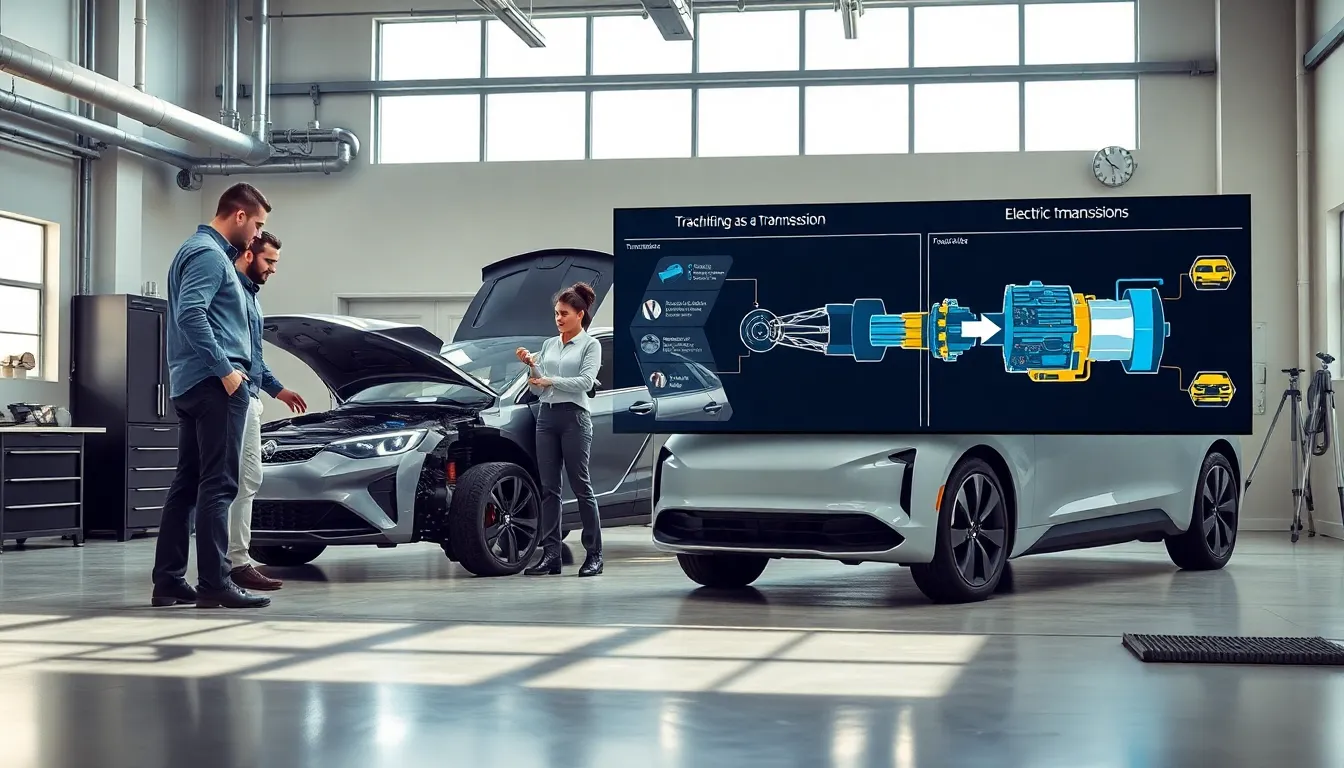Ever wondered if electric vehicles (EVs) have transmissions? It’s a question that sparks curiosity, especially among folks still clinging to the good old days of gas guzzlers. With all the buzz about EVs taking over the roads, it’s time to peel back the layers and discuss the role of transmissions in this brave new world of silent, zero-emission rides. Grab a coffee, buckle up, and let’s jump into this electrifying topic.
Table of Contents
ToggleUnderstanding Transmissions in Traditional Vehicles

To truly grasp whether electric vehicles have transmissions, it’s helpful to first understand how traditional vehicles operate. In gas-powered engines, the transmission plays a crucial role, acting as a mediator between the engine and the wheels.
The Role of Transmissions in Internal Combustion Engines
Transmissions, whether manual or automatic, serve to manage the engine’s power. They work by shifting through different gears to maintain optimal speed and efficiency. Each gear is designed to maximize the engine’s torque, ensuring that regardless of how fast the vehicle is going, the engine can perform at its best. Without a functional transmission, a combustion engine would struggle to offer the performance and efficiency that drivers rely on. In short, transmissions are the unsung heroes of traditional vehicles, giving them the ability to rev up or slow down smoothly.
How Electric Motors Differ from Combustion Engines
Now, let’s shift gears, pun intended, into the world of electric motors. Unlike their gas-guzzling counterparts, electric motors are strikingly different when it comes to power delivery and efficiency.
Torque Delivery and Speed Control in Electric Vehicles
Electric motors deliver torque almost instantaneously. This means drivers can experience powerful acceleration without the delays associated with traditional gear shifting. While combustion engines must build revs and rely on a clutch to engage different gears, electric motors provide a more direct drive. They typically operate within a wide range of speeds without needing to shift gears. This not only enhances performance but also simplifies the entire driving experience. In essence, electric vehicles are engineered for smooth, rapid responsiveness, a major departure from the traditional setups.
Do Electric Vehicles Use Transmissions?
The burning question remains: do electric vehicles use transmissions at all? The short answer is: sometimes. Let’s investigate deeper into the types of setups you might find in the world of EVs.
Types of Transmissions in Electric Vehicles
Some electric vehicles are designed with a single-speed transmission, which is fairly common. Since electric motors can quickly adjust to varying speeds, they often don’t need the multi-gear setups seen in traditional cars. A single-speed transmission efficiently transfers power from the electric motor to the wheels without unnecessary complexity.
But, some manufacturers are experimenting with multi-speed transmissions to enhance performance or efficiency. These setups allow some subtle gear shifting, but they are still far less prevalent compared to traditional vehicles.
Advantages of Electric Drive Systems without Traditional Transmissions
With or without transmissions, electric vehicles come equipped with their own set of advantages. That leads us to an intriguing comparison between traditional vehicles and EVs without standard transmissions.
Efficiency and Performance Benefits
One of the main benefits of electric drive systems is their efficiency. By eliminating the complexities of traditional transmissions, EVs can streamline their components. This not only reduces weight but also enhances energy transfer, from the batteries straight to the wheels.
So, electric vehicles often showcase superior performance, achieving fast acceleration and lower maintenance requirements. The lack of gears means fewer moving parts and less wear and tear, which is a win-win for both drivers and the environment.
Simplified Maintenance and Cost Considerations
Another benefit of electric vehicles when compared to their gas-powered rivals lies in maintenance, and let’s be honest, who really enjoys frequent trips to the mechanic?
Electric vehicles require significantly less maintenance. The absence of a traditional transmission means fewer components to worry about. There are no clutches to replace or complex gear systems to repair. As a result, maintenance costs are often lower, making EVs not only environmentally friendly but also budget-friendly in the long run.
Future of Transmissions in Electric Vehicles
As technology evolves, so too does the vision for the future of electric vehicles and their drivetrains. While the current trend leans towards simplicity, innovative technologies are on the horizon.
Innovative Technologies on the Horizon
Some companies are exploring advanced transmission technologies, including continually variable transmissions (CVTs) and dual-speed setups that aim to provide the best of both worlds. These innovations could potentially enhance the range and performance of electric vehicles, making them even more appealing to consumers.
Exciting developments are underway, suggesting that even in the realm of transmissions, electric vehicles are far from stagnating.






